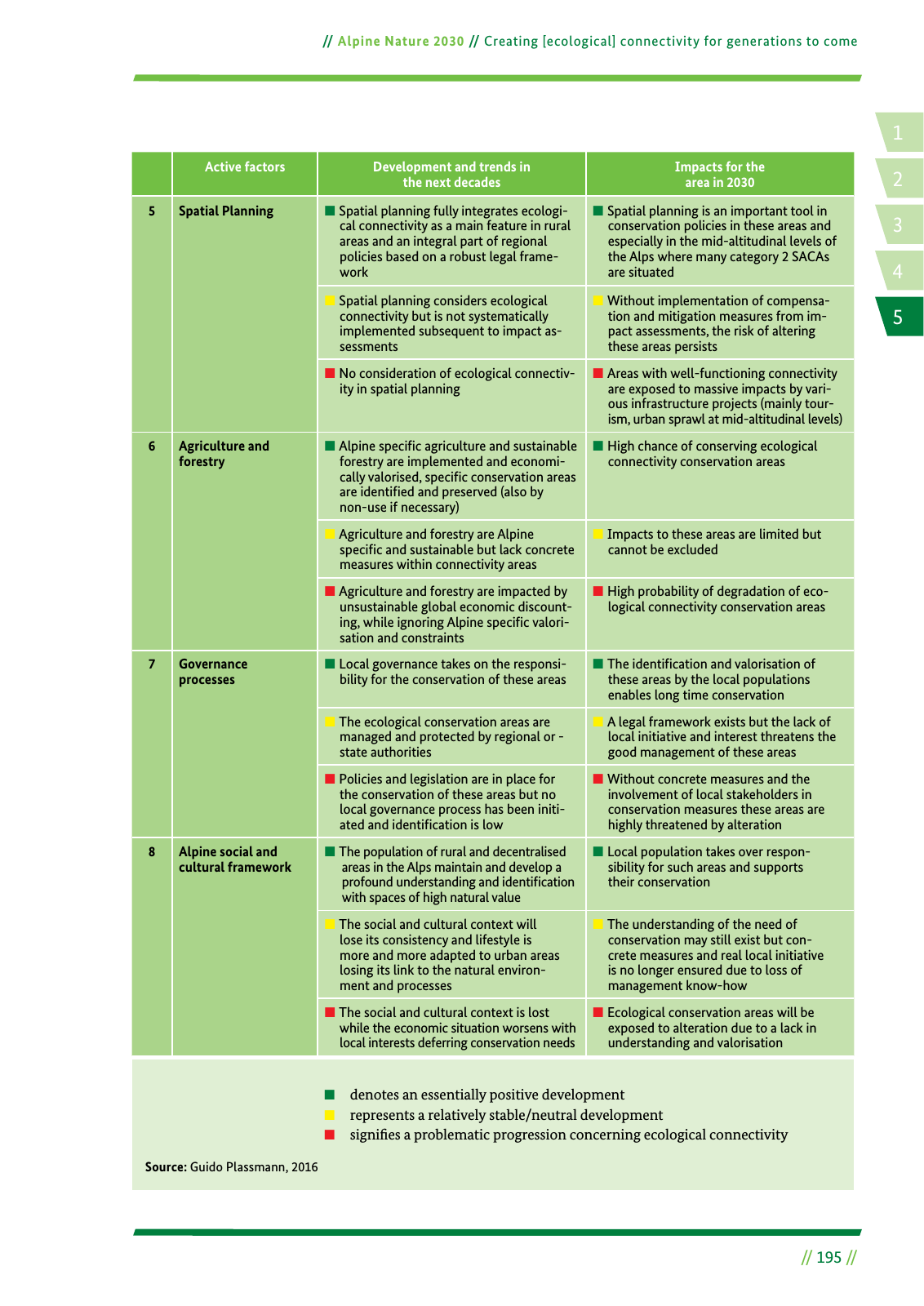14 2 5 3 Alpine Nature 2030 Creating ecological connectivity for generations to come 195 5 Spatial Planning ó Spatial planning fully integrates ecologi cal connectivity as a main feature in rural areas and an integral part of regional policies based on a robust legal frame work ó Spatial planning is an important tool in conservation policies in these areas and especially in the mid altitudinal levels of the Alps where many category 2 SACAs are situated ó Spatial planning considers ecological connectivity but is not systematically implemented subsequent to impact as sessments ó Without implementation of compensa tion and mitigation measures from im pact assessments the risk of altering these areas persists ó No consideration of ecological connectiv ity in spatial planning ó Areas with well functioning connectivity are exposed to massive impacts by vari ous infrastructure projects mainly tour ism urban sprawl at mid altitudinal levels 6 Agriculture and forestry ó Alpine speci c agriculture and sustainable forestry are implemented and economi cally valorised speci c conservation areas are identi ed and preserved also by non use if necessary ó High chance of conserving ecological connectivity conservation areas ó Agriculture and forestry are Alpine speci c and sustainable but lack concrete measures within connectivity areas ó Impacts to these areas are limited but cannot be excluded ó Agriculture and forestry are impacted by unsustainable global economic discount ing while ignoring Alpine speci c valori sation and constraints ó High probability of degradation of eco logical connectivity conservation areas 7 Governance processes ó Local governance takes on the responsi bility for the conservation of these areas ó The identi cation and valorisation of these areas by the local populations enables long time conservation ó The ecological conservation areas are managed and protected by regional or state authorities ó A legal framework exists but the lack of local initiative and interest threatens the good management of these areas ó Policies and legislation are in place for the conservation of these areas but no local governance process has been initi ated and identi cation is low ó Without concrete measures and the involvement of local stakeholders in conservation measures these areas are highly threatened by alteration 8 Alpine social and cultural framework ó The population of rural and decentralised areas in the Alps maintain and develop a profound understanding and identi cation with spaces of high natural value ó Local population takes over respon sibility for such areas and supports their conservation ó The social and cultural context will lose its consistency and lifestyle is more and more adapted to urban areas losing its link to the natural environ ment and processes ó The understanding of the need of conservation may still exist but con crete measures and real local initiative is no longer ensured due to loss of management know how ó The social and cultural context is lost while the economic situation worsens with local interests deferring conservation needs ó Ecological conservation areas will be exposed to alteration due to a lack in understanding and valorisation Active factors Development and trends in the next decades Impacts for the area in 2030 ó denotes an essentially positive development ó represents a relatively stable neutral development ó signi es a problematic progression concerning ecological connectivity Source Guido Plassmann 2016

Hinweis: Dies ist eine maschinenlesbare No-Flash Ansicht.
Klicken Sie hier um zur Online-Version zu gelangen.
Klicken Sie hier um zur Online-Version zu gelangen.